There are many different types of plaster available, some of which I have never used due to hearing mixed reports about the suitability of the products! There are several manufacturers of "one coat" plaster, which allegedly are a backing coat and finish coat all in one. I do not know anyone that has ever used these products successfully as most people prefer to use a backing coat and then a coat of finishing plaster.
Backing plaster such as browning or bonding is normally only used in renovation projects as new built houses are nearly all dry lined with plasterboard. Plasterboard has significant advantages over backing plaster (especially for DIY projects), Browning and bonding plaster are "wet" trades and if this finish is applied to walls then it takes months for them to dry out properly, skill is also needed to plaster a full wall with backing plaster, whereas dry lining with plasterboard can soon be done to a reasonable standard with little experience.
Plaster is only suitable for use indoors, where there is no damp!
All plaster should be mixed with clean cold water and always add the plaster to the water, not the water to the plaster.
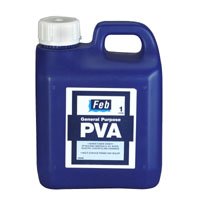
PVA bonding is a white liquid, this is a common glue and has been used in schools for years. This product is often used in DIY and building, it's uses are numerous and can be used for a sealing agent or can be mixed with paint. Plasterers dilute it to the recommendation on the container and brush it onto the wall, this creates a barrier and helps the plaster stick to the wall, it also prevents the plaster from drying out to fast and so helps prevent it cracking. You cannot normally plaster over finishing plaster without it cracking, using a coat of PVA means that you can plaster over finishing plaster without it cracking.
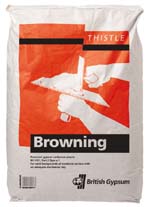
Browning plaster is a backing coat plaster, this is normally grey or pink in colour. Browning is suitable for use on surfaces such as common bricks and building blocks, or other surfaces which are absorbent. This should be applied in layers of about 10mm in thickness. Browning sets in about 1 1/2- 2 hours
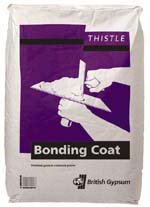
Bonding plaster is better than browning in my opinion. Bonding can be used on dense, not very absorbent materials such as engineering bricks or surfaces that have been treated with PVA. This should be applied in layers of about 8mm in thickness. Bonding sets in about 1 1/2- 2 hours
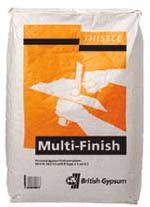
Finishing plaster is applied over the top of either bonding/browning or over plasterboard. This multi finish from British Gypsum is probably about the best around as it is suitable for most surfaces. Board finish is also available, this is only for use on plasterboard and cannot be used on browning or bonding plaster. Finishing plaster is normally applied as a final coat and is about 2mm thick. Drying time will depend on the room temperature, finishing plaster needs polishing with a float when it has started to go off, so don't leave it too long before polishing!
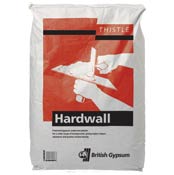
An undercoat plaster with high impact resistance and quicker drying surface. Suitable for application by hand or mechanical plastering machine to most masonry backgrounds.




